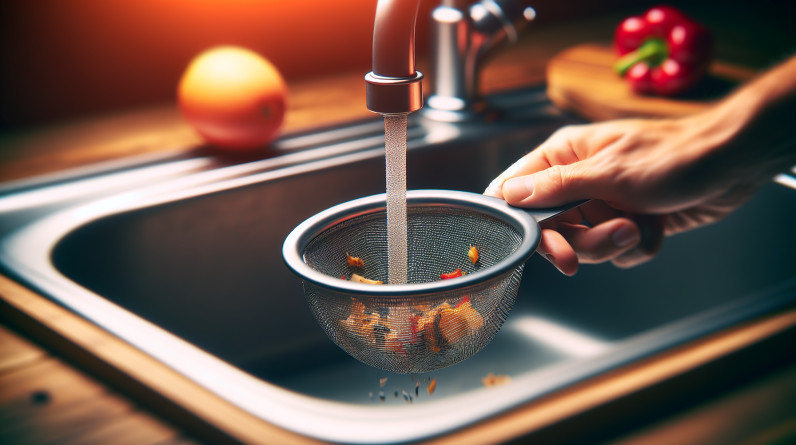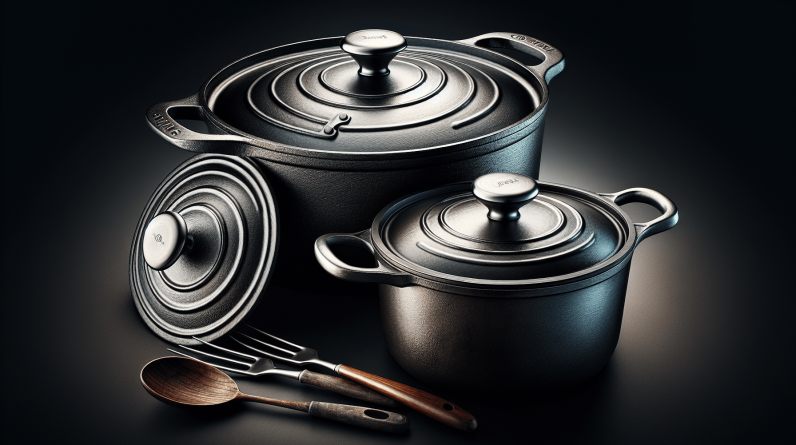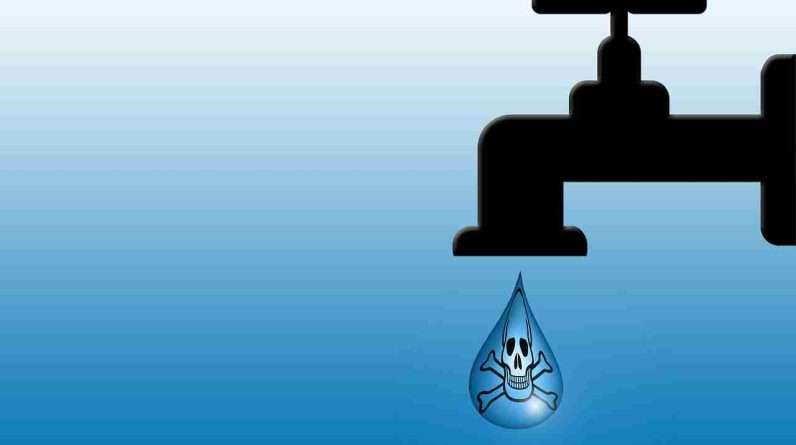Are you tired of dealing with a malfunctioning dishwasher and constantly wondering what could be causing the issues? Well, you’re in luck! In this article, we’ll walk you through some simple steps to troubleshoot common problems with your dishwasher. From pesky leaks to mysterious noises, we’ve got you covered. So sit back, relax, and let us guide you on your journey to a smoothly running dishwasher. No more dirty plates piling up in the sink – we’re here to help!

Checking Power and Connections
Ensure the dishwasher is properly plugged in
One common issue that homeowners may encounter with their dishwasher is a lack of power. It’s important to check if the dishwasher is properly plugged into an electrical outlet. Sometimes, due to movements or accidents, the plug may become loose or disconnected. By ensuring that the dishwasher is securely plugged in, you can eliminate this simple fix before moving on to other troubleshooting steps.
Check the power supply and circuit breaker
If the dishwasher is plugged in correctly but still not working, it’s essential to check the power supply. Make sure that the circuit breaker connected to the dishwasher is switched on. Sometimes, power outages or fluctuations can trip the breaker, cutting off power to the dishwasher. By examining the circuit breaker and confirming that it’s in the “on” position, you can rule out a power supply issue.
Inspect the power cord for any damage or loose connections
Another aspect that can affect the dishwasher’s functionality is the power cord. Over time, the cord may become frayed or damaged, which can interrupt the flow of electricity to the appliance. Inspect the power cord carefully, looking for any signs of wear or loose connections. If you notice any issues, it’s important to replace the power cord or have a professional repair it to ensure safe and proper functioning of the dishwasher.
Examining Water Supply
Verify the water supply valve is turned on
A dishwasher requires a steady supply of water to perform optimally. It’s crucial to check if the water supply valve, usually located under the kitchen sink, is turned on. Sometimes, due to renovations or accidental shut-offs, the valve may be closed, and the dishwasher won’t receive any water. By ensuring that the water supply valve is open, you can eliminate this as the cause of the problem.
Inspect the water inlet hose for blockages
If the water supply valve is open but the dishwasher is still not filling with water, the issue may lie with the water inlet hose. Over time, debris or mineral deposits can accumulate, leading to clogs in the hose. Inspect the water inlet hose carefully, looking for any blockages or restrictions. If you find any, gently remove the blockage or consider replacing the hose if it is severely damaged.
Check the water pressure and temperature
Inadequate water pressure or incorrect water temperature can also affect the dishwasher’s performance. Ensure that the water pressure is within the recommended range, typically between 20 and 120 pounds per square inch (psi). Additionally, check the water temperature, which should be at least 120 degrees Fahrenheit for optimal cleaning results. Adjusting the water pressure and temperature to meet the manufacturer’s recommendations can help address water supply-related issues.
Addressing Drainage Issues
Clean the dishwasher filter
When a dishwasher is not draining properly, a dirty or clogged filter is often the culprit. The filter prevents food particles and debris from entering the drainage system, but over time, it can become obstructed. To address drainage issues, locate the dishwasher filter, typically located at the bottom of the dishwasher, and remove it. Rinse it under running water to remove any accumulated debris, ensuring that it is clean and free from obstructions before reinstalling it.
Remove any clogs from the drain hose
Alongside the dishwasher filter, the drain hose can also become clogged with food particles, grease, or other debris. If the dishwasher is not draining as it should, inspect the drain hose for any clogs or restrictions. Detach the hose carefully, and while being cautious not to damage or disconnect any other parts, flush it out with water or use a pipe cleaner to remove any blockages. Reattach the hose securely once it is clear of any clogs.
Check the garbage disposal for blockages
If your dishwasher is connected to a garbage disposal unit, it’s important to consider it as a potential source of drainage issues. A clogged or malfunctioning garbage disposal can impact the dishwasher’s ability to drain water effectively. Inspect the garbage disposal unit for any blockages or obstructions, clearing them out if necessary. You can also run water through the disposal to ensure it is functioning correctly before attempting to use the dishwasher again.
Resolving Noisy Operations
Ensure the dishwasher is properly leveled
A dishwasher that is not properly leveled can produce excessive noise during operation. To address this issue, check if the dishwasher is sitting evenly on the floor. If it’s not level, adjust the dishwasher’s feet to ensure it is balanced. Using a level tool can help determine if the dishwasher is uneven. By ensuring that the dishwasher is properly leveled, you can reduce noise and enhance the appliance’s performance.
Inspect the spray arms for clogs or damage
Spray arms play a crucial role in distributing water during the dishwasher’s cleaning cycle. If the spray arms are clogged or damaged, they may not function correctly, leading to noisy operations and inadequate cleaning. Check the spray arms carefully for any debris or obstructions, removing them if necessary. Ensure that the spray arms can rotate freely and replace them if they are damaged or broken.
Check for loose or worn-out components
Loose or worn-out components within the dishwasher can also contribute to excessive noise during operation. Inspect the dishwasher’s interior, paying attention to any accessible parts such as racks, silverware baskets, or other attachments. Tighten any loose screws or connections that you come across. Additionally, if you notice any visibly worn-out components, such as damaged rollers or hinges, consider replacing them to eliminate noise and prevent further issues.

Dealing with Detergent and Rinse Aid Problems
Ensure proper detergent and rinse aid usage
Using the right detergent and rinse aid is essential for achieving optimal cleaning results in a dishwasher. Using the wrong type of detergent or not using enough can lead to poor cleaning performance. Ensuring that you are using a dishwasher-specific detergent and following the manufacturer’s instructions regarding the amount required can make a significant difference in the dishwasher’s effectiveness. Additionally, adding a rinse aid can help prevent water spots and improve drying results.
Verify the dispenser is working correctly
If you suspect that the dishwasher is not dispensing detergent or rinse aid properly, it’s important to check the dispenser mechanism. Open the dishwasher door and inspect the detergent and rinse aid compartments. Ensure that they are not clogged or blocked by any debris. If cleaning the compartments does not resolve the issue, it may be necessary to replace the dispenser unit altogether.
Adjust detergent and rinse aid amounts
Sometimes, using too much detergent or rinse aid can also cause problems in a dishwasher. Excessive amounts of these cleaning agents can lead to oversudsing or residue buildup. If you notice too many suds or a filmy residue on dishes after a wash cycle, consider reducing the detergent or rinse aid amount. Adjusting the amounts used can help eliminate issues and improve the dishwasher’s overall performance.
Handling Leaks and Water Pooling
Inspect the door gasket for any damage or misalignment
Leaks from a dishwasher’s door are often a result of a faulty or damaged door gasket. Over time, the gasket can wear out or become misaligned, allowing water to escape during the wash cycle. Carefully examine the door gasket, looking for any visible signs of damage or misalignment. If you notice any issues, such as cracks, tears, or a poor seal, replacing the gasket will likely solve the leaking problem.
Check the dishwasher tub for cracks or leaks
Leaks can also occur from the dishwasher tub itself. Regularly inspect the tub’s interior and exterior for any cracks, splits, or signs of corrosion. If you find any damage, it’s important to address it promptly. Depending on the severity of the issue, you may need to repair or replace the dishwasher tub. By resolving these tub-related leaks, you can prevent further water damage and ensure the dishwasher’s proper functioning.
Investigate the water inlet valve for leaks
A malfunctioning water inlet valve can cause leaks or water pooling in a dishwasher. This valve regulates the flow of water into the appliance. If it fails to close properly, water leakage can occur. Inspect the water inlet valve for any signs of leakage or damage. If you notice water dripping from the valve or a malfunction, it may be necessary to replace the water inlet valve to eliminate leaks and restore the dishwasher’s performance.

Solving Dishwasher Not Cleaning Properly
Clean the spray arms and unclog the nozzles
When a dishwasher is not cleaning dishes effectively, it can be a frustrating experience. One common reason for this issue is clogged spray arms or nozzle openings. Over time, food particles, mineral deposits, or other debris can accumulate, hindering the water flow and spray patterns. Remove the spray arms and carefully clean them using a brush or toothpick to unclog the nozzles. By ensuring the proper functioning of the spray arms, you can improve the dishwasher’s cleaning performance.
Check the water temperature and pressure
The water temperature and pressure are essential factors in achieving clean dishes. If the water temperature is too low, the dishwasher may struggle to remove grease or dried-on food particles effectively. Verify that the water temperature is set to the manufacturer’s recommendations. Additionally, check the water pressure to ensure it falls within the recommended range. Adjusting these factors can significantly enhance the dishwasher’s cleaning capabilities.
Inspect the dishwasher rack for proper loading
The way dishes are loaded into the dishwasher can affect its cleaning performance. Overloading the dishwasher or placing dishes in a way that blocks water spray can hinder the cleaning process. Take a moment to inspect the dishwasher rack and ensure that dishes are loaded properly, allowing sufficient space for water and detergent to reach all surfaces. Following the manufacturer’s guidelines for loading the dishwasher can help resolve cleaning issues and lead to spotless dishes.
Addressing Dishwasher Not Draining
Verify the drain hose for kinks or blockages
If your dishwasher is not draining properly, a kinked or clogged drain hose might be to blame. First, inspect the drain hose for any kinks or bends that could obstruct the flow of water. Gently straighten out any kinks you find to ensure a smooth drainage path. Additionally, check for blockages within the drain hose itself. Clearing any debris or particles from the hose can help restore proper drainage in the dishwasher.
Check the air gap for any obstructions
An air gap is a vital component that prevents any backflow of water from the dishwasher into the sink. If the air gap becomes clogged or obstructed, the dishwasher will have difficulty draining. Locate the air gap, usually mounted on the sink or countertop, and remove its cap. Inspect the inside for any debris or obstructions, and remove them if present. By clearing the air gap, you can ensure proper drainage in the dishwasher.
Inspect the pump and motor for defects
If all else fails and the dishwasher still doesn’t drain properly, there may be an issue with the pump or motor. The pump and motor work together to drain water from the dishwasher during the cycle. Inspect these components for any visible defects, such as broken parts or wear and tear. If you suspect a problem with the pump or motor, it is advisable to seek professional assistance or contact the manufacturer for guidance in resolving the issue.
Resolving Dishwasher Not Drying
Verify rinse aid usage and adjust amounts
A dishwasher’s drying capability often relies on the proper use of rinse aid. Rinse aid helps to reduce water spots and ensure thorough drying of dishes. If your dishwasher is not drying properly, check the rinse aid compartment and ensure it is filled. Additionally, adjust the amount of rinse aid used according to the manufacturer’s recommendations. By ensuring adequate rinse aid usage, you can improve the dishwasher’s drying performance.
Check for obstructions in the air vent
The air vent allows moisture and steam to escape from the dishwasher, promoting the drying process. If the air vent is obstructed or clogged, it can hinder the dishwasher’s drying abilities. Locate the air vent, usually located in the dishwasher door, and inspect it for any blockages. Remove any debris or buildup found within the vent to allow the free flow of air. Ensuring a clear air vent can enhance the dishwasher’s ability to dry dishes effectively.
Inspect the heating element for damage
The heating element in a dishwasher plays a crucial role in drying dishes. If the heating element is damaged or malfunctioning, the dishwasher may struggle to dry dishes properly. Inspect the heating element, usually located at the bottom of the dishwasher, for any signs of damage or defects. If you notice any issues, such as visible breaks or discoloration, it may be necessary to replace the heating element to restore the dishwasher’s drying functionality.
Handling Dishwasher Smells
Clean the dishwasher interior and remove debris
Over time, food particles, grease, and other debris can accumulate within the dishwasher, leading to unpleasant odors. To eliminate dishwasher smells, clean the interior thoroughly. Remove the racks, spray arms, and other removable parts, and clean them individually. Wipe down the interior walls, door, and floor of the dishwasher, paying attention to any crevices or corners where buildup may occur. This thorough cleaning can eliminate odors and prevent them from recurring.
Use specialized dishwasher cleaning products
If dishwasher smells persist after a thorough cleaning, specialized dishwasher cleaning products can help. These products are designed to eliminate odors, remove residue, and improve overall dishwasher performance. Follow the instructions on the product packaging, as different cleaning agents may have specific usage guidelines. By using these products regularly, you can maintain a fresh-smelling dishwasher and prevent any unpleasant odors.
Check for food debris in the filter and drain
Dishwasher filters can accumulate food particles and debris, leading to odor issues. Check the dishwasher filter, usually located at the bottom of the appliance, and remove any buildup present. Rinse the filter under running water to remove stubborn residue. Additionally, inspect the drain for any food debris that may have become lodged. By regularly cleaning the filter and ensuring a clear drain, you can prevent dishwasher smells and maintain a fresh-smelling appliance.
In conclusion, troubleshooting common problems with a dishwasher can be a manageable task with the right knowledge and steps. By addressing power and connection issues, examining the water supply, dealing with drainage problems, resolving noisy operations, handling detergent and rinse aid problems, addressing leaks and water pooling, solving cleaning and drainage problems, resolving drying issues, and tackling dishwasher smells, you can keep your dishwasher functioning effectively and enjoy clean, spotless dishes every time. Remember to consult the manufacturer’s guidelines and seek professional assistance when necessary to ensure safety and proper repairs.









